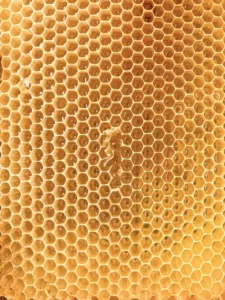Table of Contents
Honey is a versatile and beneficial natural ingredient that has been used for centuries in hair care. It is known for its moisturizing and healing properties, making it a popular choice for homemade hair masks and treatments. However, like any natural remedy, it’s important to understand the potential side effects and how to use honey on hair safely and effectively. In this article, we will explore the side effects of using honey on hair and address common concerns related to its usage.
Side Effects of Using Honey on Hair
-
Stickiness and Messiness: One of the most noticeable side effects of using honey on hair is its stickiness. Honey has a thick consistency that can make it challenging to apply evenly to the hair. It tends to stick to your fingers and hair strands, making the application process a bit messy. To avoid this, you can mix honey with other ingredients like aloe vera gel or yogurt to make the application easier.
-
Potential Allergic Reactions: While honey is generally considered safe for topical use, there is a small chance that some individuals may be allergic to it. Allergic reactions to honey can manifest as redness, itching, or irritation on the scalp and skin. To ensure that you’re not allergic to honey, perform a patch test before using it on your entire scalp.
-
Difficulty Rinsing Out: Another side effect of using honey on hair is that it can be difficult to rinse out completely. The stickiness of honey can leave behind a residue on the hair if not rinsed out thoroughly. To address this issue, you can dilute the honey with water before applying it to your hair.
-
Attraction of Insects: Due to its sweet and sticky nature, using honey on hair may attract insects like bees or flies, especially if you’re outdoors. To avoid this, it’s recommended to use honey-based hair masks or treatments indoors and wash your hair thoroughly after the treatment to remove any residual honey.
-
Potential for Hair Color Lightening: There is a belief that honey can naturally lighten hair color, particularly when exposed to sunlight. While this effect may be minimal, those with color-treated hair may notice slight changes in their hair color over time. To minimize any potential color changes, it’s suggested to use honey treatments in moderation and consider its potential lightening effect when choosing the right treatment for your hair.
-
Risk of Hair Damage: Using honey on hair may cause hair damage if not used correctly. Leaving honey on hair for an extended period or using it too frequently can lead to dryness and brittleness. To prevent hair damage, it’s crucial to follow proper guidelines for using honey on hair. It’s recommended to use honey hair treatments no more than once a week and leave them on for a maximum of 30 minutes to one hour.
-
Scalp Irritation: In some cases, applying honey directly to the scalp may cause irritation, especially if you have sensitive skin. The stickiness and thickness of honey can create discomfort and itching on the scalp. To minimize the risk of scalp irritation, dilute honey with water or other soothing ingredients before applying it to the scalp. If you experience any discomfort or irritation, discontinue the use of honey on your scalp.
-
Difficulty Removing Honey Residue: Honey can leave a residue on the hair if not rinsed out properly. This residue can be challenging to remove, especially if you’ve applied a thick layer of honey to your hair. To ensure that all honey residue is removed, it’s suggested to use warm water to thoroughly rinse your hair. You may also use a clarifying shampoo once a month to remove any buildup caused by honey or other hair products.
-
Risk of Attracting Dust and Dirt: Due to its stickiness, honey-treated hair may attract dust and dirt more easily, leading to a less clean and fresh appearance. To avoid this, it’s recommended to apply honey treatments to clean, damp hair. This can help reduce the risk of attracting dust and dirt and maintain the cleanliness of your hair.
-
Unpleasant Smell: Some people may find the smell of honey to be overpowering or unpleasant, especially when used in large quantities. To mask the smell of honey, you can add a few drops of essential oils like lavender or rosemary to your honey hair mask. Not only will this enhance the scent, but it will also provide additional benefits for your hair and scalp.
Conclusion
Honey is a versatile and beneficial natural ingredient for hair care. It offers moisturizing, conditioning, and antimicrobial properties that can promote healthier and more vibrant hair. However, it’s important to use honey on hair with care and consideration to avoid potential side effects. Mixing honey with other nourishing ingredients, diluting it with water, and following proper guidelines for application and removal can help minimize any negative effects. When used in moderation and in combination with other suitable ingredients, honey can be a valuable addition to your hair care routine, providing natural goodness and benefits to your locks.



